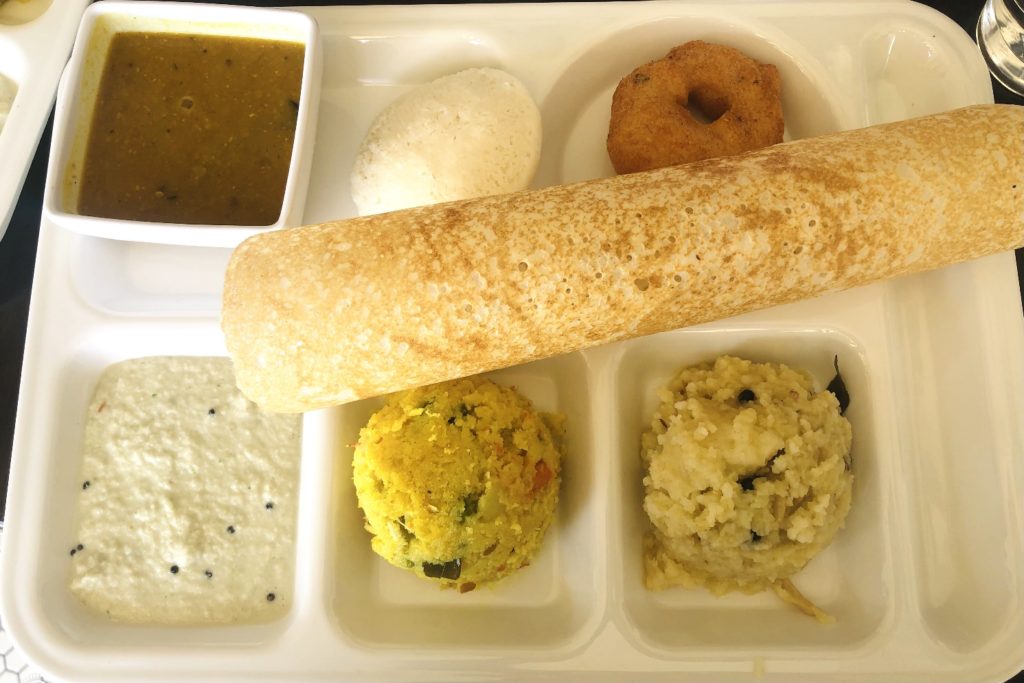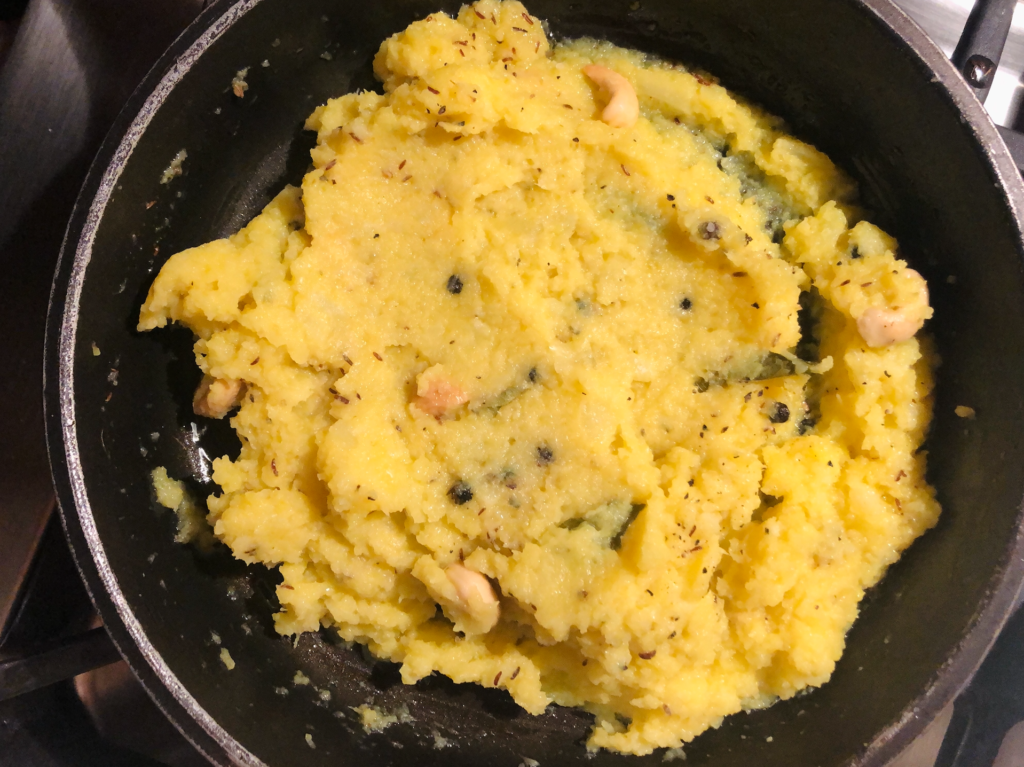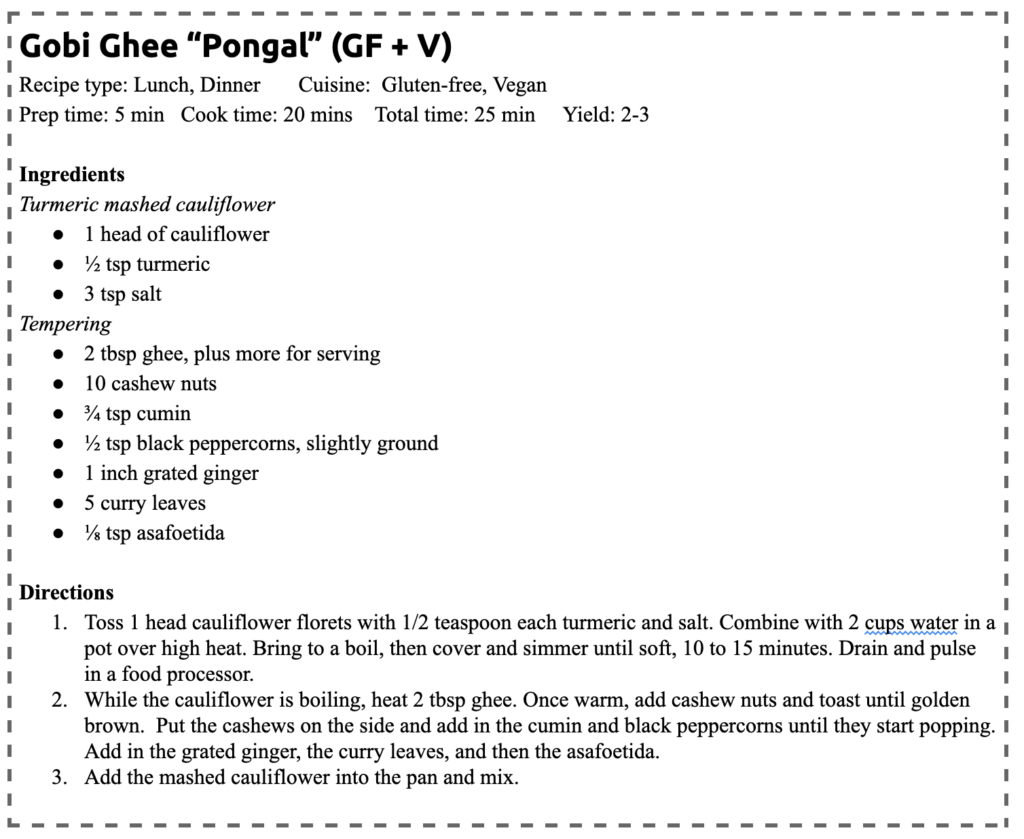For those that know me well, they are aware of my love affair with the Indian restaurant chain A2B. Since I’ve worked in Princeton over the summer, I have been a loyal weekly customer (shout out to my #1 waiter Azan!), sampling the menu from medu vada to gobi 65. One of my favorite foods comes from the mini tiffin combo (pictured below).

Ghee pongal – pictured on the bottom right side – is a traditional South Indian dish made with rice, split yellow mung dal, ghee, cumin, ginger, pepper and curry leaves. It’s like a soothing porridge. After having tried cauliflower rice recently, I decided to cream it and turn it into a ghee-pongal-ish dish. So here we are: cauliflower ghee pongal, or gobi ghee pongal.

Let’s dive into the star ingredients:
- Cauliflower. I’m not here to pretend that cauliflower is a substitute for rice, but for those looking to add extra vegetables to their diet, cauliflower has a way of mimicking grains and even dairy. Per cup, cauliflower has only 25 calories, 3 grams of fiber, and a handful of antioxidants. In particular, cauliflower is particularly high in glucosinolates and isothiocyanates, which protect against free radicals.
- Ghee. Ghee is a variation of clarified butter that is popular in the culinary traditions of the Middle East and India, and plays a large role in ayurvedic cooking. The term comes from the Sanskrit word meaning “sprinkled.” Personally, I’ve found ghee to be tolerable and even aid in my digestion, despite my dairy-free lifestyle. Ghee is a significant source of conjugated linoleic acid, or CLA, which helps maintain lean muscle mass.
- Vegan substitute: If you are looking for a dairy-free substitute, you can use coconut oil or another vegetable oil. Alternatively, if you want a buttery flavor, Nutiva has a butter-flavored coconut oil.
- Black pepper. Pepper’s active ingredient piperine may protect against cell damage, improve nutrient absorption, and aid digestive issues.
- Turmeric. While traditional ghee pongal has no turmeric, I added it because black pepper and turmeric are the power couple of the spice world. Turmeric’s active ingredient, curcumin, is poorly absorbed into the bloodstream. However, adding black pepper can help. Research supports that combining the piperine in black pepper with the curcumin in turmeric enhances curcumin absorption by up to 2,000%.
- Ginger. The active component of ginger, gingerol, has powerful anti-inflammatory and antioxidant effects. It can also help with osteoarthritis; one literature review found that people who used ginger to treat their OA saw significant reductions in pain and disability. Ginger appears to speed up emptying of the stomach, which can be beneficial for people with indigestion and related stomach discomfort.
I hope you enjoy this recipe! And if you’re looking for the real deal recipe, check this out.
